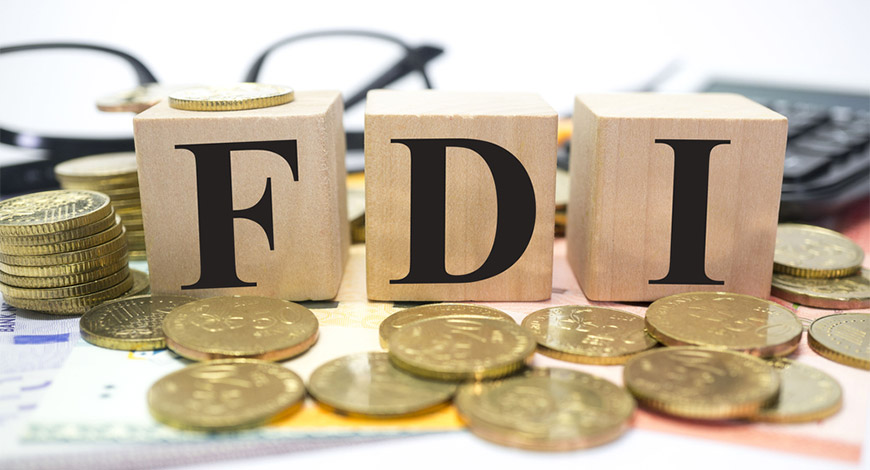India's exports and foreign direct investment (FDI) are expected to experience significant growth with the implementation of free trade agreements (FTAs) and the improvement of the business environment.
In light of challenging global conditions impacting India's exports, the Ministry of Commerce and Industry aims to enhance shipments through a new trade and investment promotion strategy. This strategy focuses on developing closer commercial ties with 12 selected countries, including the US, Brazil, Canada, UAE, Saudi Arabia, UK, Germany, Sweden, Japan, Taiwan, South Korea, and Russia. Roadshows and marketing events will be conducted to strengthen relationships with these countries. Since these 12 countries are also major contributors to foreign direct investments, efforts will be made to establish communication channels with prominent companies in those countries, encouraging them to deepen their engagement with India. A few years ago, a similar targeted approach was adopted, setting specific targets for the top 30 markets rather than solely relying on annual goals.
Although the focused approach targeting specific countries is expected to yield some positive outcomes, the efforts can be significantly enhanced by pursuing free trade agreements (FTAs), particularly comprehensive agreements with influential regional blocs such as North America, the European Union, and the Indo-Pacific region. Among the 12 countries identified, India has already established comprehensive economic partnership agreements with Japan, South Korea, and the UAE. Currently, negotiations for FTAs are underway with the UK, Canada, and the Gulf Cooperation Council. FTAs have the potential to amplify the impact on trade and investments, acting as a catalyst for growth.
The implementation of India's Comprehensive Economic Partnership Agreement (CEPA) with the UAE on May 1, 2022, has already led to a significant increase in bilateral trade and investments. The objective is to elevate bilateral trade to $115 billion within a span of five years, surpassing the $84.5 billion recorded in FY 2022-2023. Notably, the UAE has invested $3.3 billion in India, while India's outbound investments amounted to $1.2 billion during the same fiscal year. A similar potential awaits the Indo-UK relationship, with the goal of raising bilateral trade to $100 billion by 2030 from the current level of $20.4 billion. Once the Free Trade Agreement (FTA) between the two countries is finalized, it is expected to facilitate further two-way investments. Commerce and Industries Minister Piyush Goyal expresses optimism about concluding the agreement within the coming months.
Nevertheless, the most effective approach to enhance India's trade and attract foreign direct investment (FDI), not only with the selected 12 countries but also with all nations, lies in adopting a more open trade policy and fostering a facilitative business environment. Many countries that have transitioned from developing to developed status have achieved this through a manufacturing-driven export revolution. However, India's tariff rates remain higher compared to most of its trading partners, necessitating a reduction. This point was emphasized by the US ambassador to India, who highlighted that India currently maintains the highest general trade barriers among major economies worldwide. By reducing barriers, India's prospects can significantly improve. Similarly, former Japanese Prime Minister Yoshihide Suga recently expressed his intention to advocate for improving the business environment while encouraging increased private sector investments in India.






.jpg)